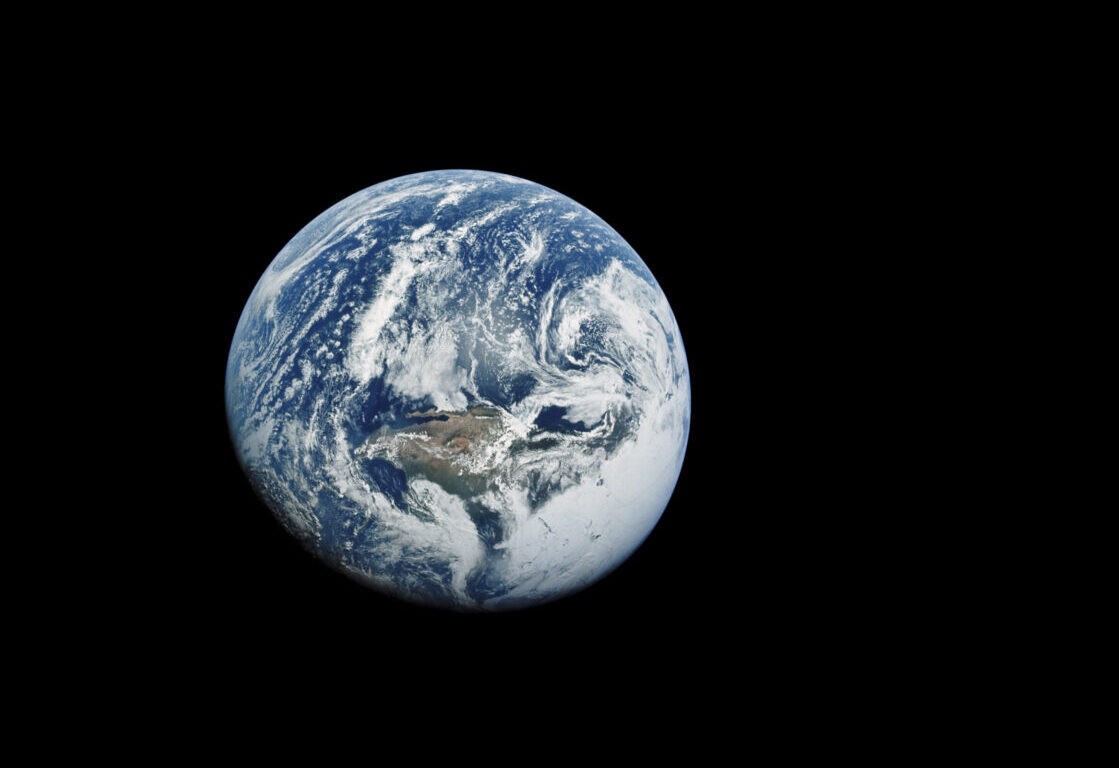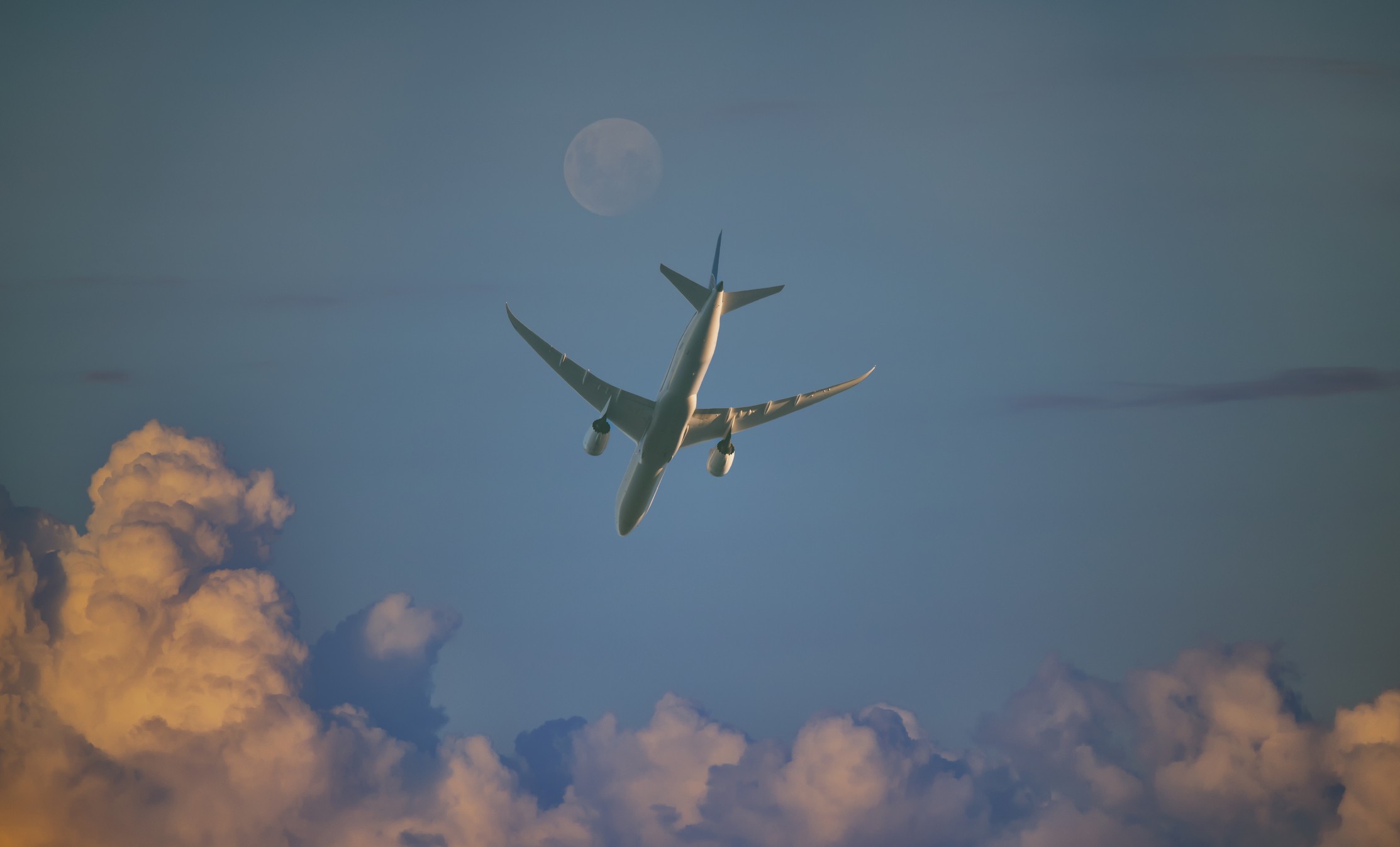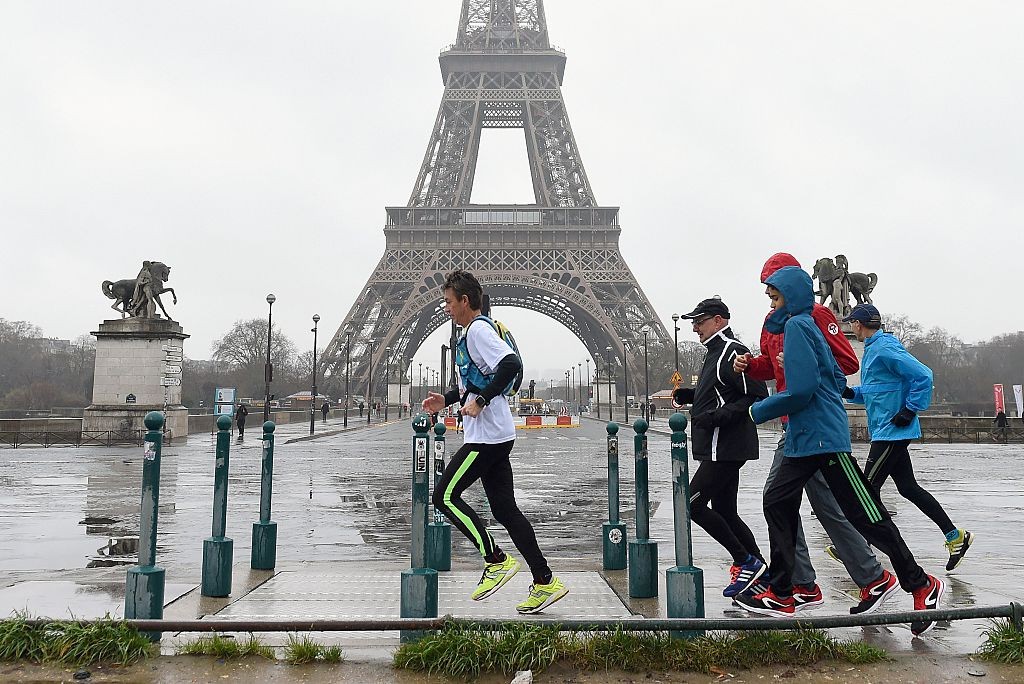Traveling the world is a dream for many, and understanding the time it takes to circumnavigate the globe is crucial for planning your adventure. Planning an around-the-world trip can seem daunting, but TRAVELS.EDU.VN is here to simplify the process and help you create an unforgettable experience. This article will explore various travel methods and the time required for each, ensuring you have the information you need for your journey. Let’s explore worldwide voyages, global trips, and long-distance adventures.
1. Understanding the Earth’s Dimensions
Before diving into travel times, it’s essential to grasp the Earth’s size. According to NASA, the Earth has a circumference of approximately 40,075 kilometers (24,901 miles) at the equator.
 Earth's beauty, captured by NASA
Earth's beauty, captured by NASA
This measurement is crucial for calculating travel times, whether you plan to walk, drive, fly, or sail around the world. The equatorial circumference is slightly larger than the polar circumference (about 40,008 kilometers or 24,860 miles) because the Earth is an oblate spheroid, not a perfect sphere.
2. Walking Around the World: A Test of Endurance
2.1. The Time Commitment
Walking around the world is an extraordinary feat of endurance. The average adult walking speed is about 4.82 kilometers per hour (3 miles per hour), according to a study published in the Journal of Physical Therapy Science.
At this pace, walking the Earth’s equator would take approximately 8,313 hours. That translates to roughly 346 days of non-stop walking. Considering the need for sleep, meals, and rest, a realistic estimate would be closer to two to three years.
2.2. Factors Affecting Walking Time
- Terrain: Varied terrains, such as mountains, deserts, and jungles, significantly impact walking speed and overall time.
- Weather Conditions: Extreme weather, including intense heat, heavy rain, or snow, can slow progress and pose safety risks.
- Physical Fitness: The walker’s physical condition and stamina play a crucial role in maintaining a consistent pace and avoiding injuries.
- Logistics: Planning for food, water, shelter, and gear transportation adds complexity and affects the overall duration.
2.3. Notable Walking Expeditions
Several individuals have embarked on remarkable walking journeys around the world, pushing the limits of human endurance.
| Walker | Duration | Distance | Notes |
|---|---|---|---|
| Jean Béliveau | 11 years | 75,000 kilometers | Walked to promote peace and children’s rights. |
| Dave Kunst | 4 years | 32,000 kilometers | First verified person to walk around the world. |
| Karl Bushby | 12+ years | 36,000+ kilometers | Ongoing journey, facing logistical and political challenges. |
These expeditions highlight the immense dedication and meticulous planning required for such an undertaking.
3. Driving Around the World: A Road Trip of a Lifetime
3.1. Estimated Driving Time
Driving around the world offers a faster alternative to walking, but still requires significant time and planning. Assuming an average driving speed of 80 kilometers per hour (50 miles per hour), the equatorial distance could be covered in approximately 501 hours of driving. This equates to about 21 days of continuous driving. However, accounting for realistic driving schedules, border crossings, and rest stops, a driving expedition would likely take several months.
3.2. Factors Influencing Driving Time
- Road Conditions: The availability and quality of roads vary significantly across different regions, affecting driving speed and safety.
- Border Crossings: Navigating border crossings can be time-consuming due to customs procedures, visa requirements, and potential delays.
- Vehicle Reliability: Maintaining a reliable vehicle capable of handling diverse terrains and conditions is crucial for avoiding breakdowns.
- Permits and Documentation: Obtaining necessary permits, licenses, and insurance for international driving is essential.
3.3. Memorable Driving Adventures
Numerous adventurers have documented their experiences driving around the world, showcasing the challenges and rewards of such expeditions.
| Driver(s) | Vehicle | Duration | Highlights |
|---|---|---|---|
| Garry and Lisa Sowerby | Land Rover | 14 months | Traveled through six continents, experiencing diverse cultures and landscapes. |
| Emilio Scotto | 1980 Honda | 10 years | Longest motorcycle journey, covering over 735,000 kilometers. |
| Team Mongol Rally | Various Cars | 4-6 weeks | Charity rally from Europe to Asia, emphasizing adventure and fundraising. |
These journeys provide inspiration and practical insights for anyone considering a similar adventure.
4. Flying Around the World: Speed and Efficiency
4.1. Commercial Flights
Flying is the quickest way to circumnavigate the globe. Commercial passenger planes typically cruise at speeds between 925 to 965 kilometers per hour (575 to 600 miles per hour), according to Simple Flying.
At these speeds, flying around the Earth would take less than 42 hours, including layovers and connecting flights. Modern air travel offers a comfortable and efficient means of seeing the world in a fraction of the time required by other methods.
4.2. Supersonic Travel
For those seeking even faster travel, supersonic jets offer unparalleled speed. The now-retired Concorde could fly at Mach 2.04 (approximately 2,518 kilometers per hour or 1,565 miles per hour), allowing it to circle the Earth in about 19 hours.
While commercial supersonic travel is currently limited, advancements in aviation technology may bring about a resurgence in the future.
4.3. Historical Aviation Feats
Throughout aviation history, numerous pilots and crews have achieved remarkable feats in circumnavigating the globe by air.
| Achievement | Aircraft | Duration | Notes |
|---|---|---|---|
| First Non-Stop Flight Around the World | Voyager | 9 days, 3 minutes, 44 seconds | Piloted by Dick Rutan and Jeana Yeager. |
| Fastest Circumnavigation by Commercial Jet | Concorde | 31 hours, 27 minutes | Chartered flight carrying 98 passengers and crew. |
| First Solo Flight Around the World | Lockheed Vega | 8 days, 15 hours, 51 minutes | Flown by Wiley Post in 1933. |
These milestones demonstrate the evolution of aviation and the relentless pursuit of speed and efficiency.
 Historic Concorde Aircraft
Historic Concorde Aircraft
5. Sailing Around the World: Embracing the Ocean’s Rhythm
5.1. Average Sailing Time
Sailing around the world is a classic adventure that allows travelers to connect with the ocean and experience remote destinations. The average sailing time for a circumnavigation is between two to three years, depending on the route, vessel, and weather conditions.
5.2. Factors Affecting Sailing Duration
- Route Selection: The chosen route, including the number of stops and regions visited, significantly impacts the overall duration.
- Weather Patterns: Navigating favorable wind and weather patterns is crucial for efficient sailing and avoiding storms.
- Vessel Type: The size and type of sailing vessel, including its speed and stability, affect travel time and comfort.
- Crew Experience: The experience and skill of the crew are essential for handling the vessel and managing potential challenges.
5.3. Famous Sailing Voyages
Throughout maritime history, many sailors have achieved legendary status for their circumnavigation voyages.
| Sailor | Vessel | Duration | Highlights |
|---|---|---|---|
| Ferdinand Magellan | Nao Victoria | 3 years | First expedition to circumnavigate the Earth (Magellan died during the voyage). |
| Joshua Slocum | Spray | 3 years | First solo circumnavigation. |
| Dame Ellen MacArthur | B&Q/Castorama | 71 days | Fastest solo circumnavigation (non-stop). |
These voyages embody the spirit of exploration and the enduring allure of the sea.
6. Space Travel: A Glimpse Beyond Earth
6.1. Orbital Velocity
Traveling in space offers a unique perspective on our planet and the vastness of the universe. The International Space Station (ISS) orbits the Earth at a speed of approximately 28,000 kilometers per hour (17,500 miles per hour), completing one orbit in about 90 minutes.
6.2. Circumnavigating Earth from Space
While the ISS does not technically circumnavigate the Earth in the traditional sense, its continuous orbit means that astronauts experience multiple sunrises and sunsets each day. This constant motion provides a profound appreciation for the Earth’s rotation and its place in the cosmos.
6.3. Future Space Tourism
With the rise of commercial space tourism, more people may have the opportunity to experience the wonder of space travel. Companies like SpaceX, Blue Origin, and Virgin Galactic are developing technologies to make space travel more accessible, potentially opening up new possibilities for circumnavigating the Earth from a unique vantage point.
7. Planning Your Round-the-World Trip
Planning a trip around the world, no matter the method, requires careful consideration of various factors.
7.1. Defining Your Travel Style
Determine your preferred travel style, whether it’s budget backpacking, luxury travel, or adventure expeditions. This will influence your choice of transportation, accommodation, and activities.
7.2. Setting a Budget
Establish a realistic budget that accounts for transportation costs, accommodation, food, activities, visas, insurance, and unexpected expenses.
7.3. Choosing Your Route
Select a route that aligns with your interests and priorities, considering factors such as climate, cultural attractions, and political stability.
7.4. Securing Visas and Documentation
Research visa requirements for each country on your itinerary and obtain the necessary documentation well in advance.
7.5. Packing Essentials
Pack essential items such as appropriate clothing, comfortable shoes, travel adapters, and any necessary medications.
7.6. Staying Healthy and Safe
Consult with a healthcare professional regarding necessary vaccinations and health precautions. Obtain comprehensive travel insurance and be aware of potential safety risks in each region.
8. Napa Valley: A Perfect Starting Point
Why not begin your journey with a luxurious stay in Napa Valley? Known for its stunning vineyards, world-class cuisine, and relaxing atmosphere, Napa Valley offers a perfect start to any global adventure. TRAVELS.EDU.VN specializes in curating unforgettable Napa Valley experiences, from wine tours to gourmet dining.
 Napa Valley's charm
Napa Valley's charm
8.1. Napa Valley Attractions
- World-Class Wineries: Explore renowned wineries like Domaine Carneros, Castello di Amorosa, and Robert Mondavi Winery.
- Gourmet Dining: Indulge in exquisite meals at Michelin-starred restaurants such as The French Laundry and Meadowood.
- Scenic Hot Air Balloon Rides: Experience breathtaking views of Napa Valley from above with a hot air balloon tour.
- Relaxing Spa Treatments: Unwind with rejuvenating spa treatments at luxury resorts like Solage Calistoga and Auberge du Soleil.
8.2. TRAVELS.EDU.VN Services in Napa Valley
TRAVELS.EDU.VN offers a range of services to make your Napa Valley experience seamless and memorable:
- Customized Wine Tours: Tailored tours to suit your preferences, including private tastings and vineyard visits.
- Luxury Accommodation: Handpicked selection of the finest hotels, resorts, and villas in Napa Valley.
- Gourmet Dining Reservations: Priority reservations at top-rated restaurants and exclusive dining experiences.
- Transportation Services: Chauffeured transportation for convenient and stylish travel within Napa Valley.
8.3. Start Your Adventure with TRAVELS.EDU.VN
Begin your round-the-world trip in style with TRAVELS.EDU.VN. Let us handle the details while you relax and enjoy the beauty and luxury of Napa Valley.
9. Why Choose TRAVELS.EDU.VN for Your Travel Needs?
Planning a trip around the world can be overwhelming, but TRAVELS.EDU.VN is here to help. We offer personalized services to ensure your journey is seamless and unforgettable.
9.1. Expertise and Experience
With years of experience in the travel industry, TRAVELS.EDU.VN has the knowledge and expertise to plan every aspect of your trip.
9.2. Personalized Service
We take the time to understand your unique travel preferences and create a customized itinerary that suits your needs.
9.3. Comprehensive Support
From booking flights and accommodations to arranging tours and activities, we handle all the details so you can relax and enjoy your trip.
9.4. 24/7 Assistance
Our team is available 24/7 to provide assistance and support throughout your journey.
10. Ready to Plan Your Adventure?
The time it takes to travel the world varies greatly depending on your chosen mode of transportation. Whether you prefer the slow pace of walking or sailing, or the speed of flying, the possibilities are endless. Start your journey with TRAVELS.EDU.VN and let us help you create an unforgettable adventure.
10.1. Contact Us Today
Ready to start planning your dream trip? Contact TRAVELS.EDU.VN today for a free consultation.
- Address: 123 Main St, Napa, CA 94559, United States
- WhatsApp: +1 (707) 257-5400
- Website: TRAVELS.EDU.VN
Let us help you turn your travel dreams into reality.
FAQ: Frequently Asked Questions About Traveling the World
Q1: How long does it take to walk around the world?
Walking around the world at an average pace would take approximately 8,313 hours, or about 346 days of non-stop walking. Realistically, accounting for rest and other factors, it would likely take two to three years.
Q2: What is the fastest way to travel around the world?
Flying is the fastest way to travel around the world. Commercial passenger planes can do it in less than 42 hours, including layovers.
Q3: How long does it take to sail around the world?
Sailing around the world typically takes between two to three years, depending on the route, vessel, and weather conditions.
Q4: What factors affect the time it takes to drive around the world?
Factors include road conditions, border crossings, vehicle reliability, and necessary permits and documentation.
Q5: Can the International Space Station circumnavigate the Earth?
The ISS orbits the Earth at approximately 28,000 kilometers per hour, completing one orbit in about 90 minutes, experiencing multiple sunrises and sunsets each day.
Q6: What should I consider when planning a round-the-world trip?
Consider your travel style, budget, route, visa requirements, packing essentials, and health and safety precautions.
Q7: What services does TRAVELS.EDU.VN offer for planning a trip?
TRAVELS.EDU.VN offers expertise, personalized service, comprehensive support, and 24/7 assistance for planning your trip.
Q8: Why is Napa Valley a good starting point for a round-the-world trip?
Napa Valley offers stunning vineyards, world-class cuisine, and a relaxing atmosphere, providing a perfect start to any global adventure.
Q9: What are some attractions in Napa Valley?
Attractions include world-class wineries, gourmet dining, scenic hot air balloon rides, and relaxing spa treatments.
Q10: How can I contact TRAVELS.EDU.VN to plan my trip?
You can contact TRAVELS.EDU.VN at 123 Main St, Napa, CA 94559, United States, via WhatsApp at +1 (707) 257-5400, or visit our website at TRAVELS.EDU.VN.
Ready to embark on the journey of a lifetime? Contact TRAVELS.EDU.VN today and let us transform your dream of traveling the world into a breathtaking reality. We will handle all the intricate details, ensuring a seamless, luxurious, and unforgettable experience from start to finish. Don’t just dream it – live it with travels.edu.vn!
